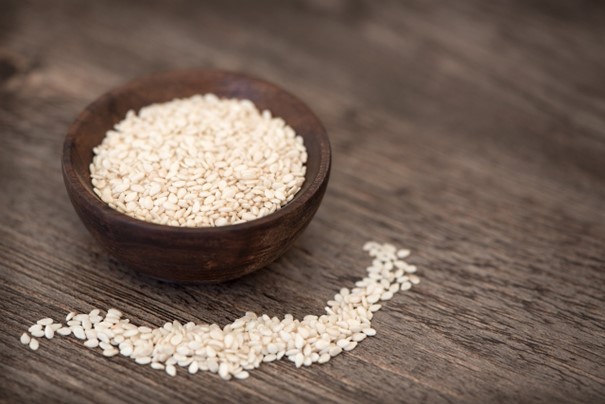Brazil an increasingly important exporter of sesame
Brazil has seen a huge increase in sesame exports over the past year, which may increase further as Brazilian farmers may be more willing to sacrifice corn acreage due to low corn prices.
Brazil pushes up export rankings
Although traditionally a relatively small player in the sesame export market, Brazil has seen a huge increase in exports over the past year. According to UN Comtrade, the country went from exporting 42,400 tons in 2022 to 151,215 tons in 2023. This is almost a fourfold increase in one year and means that Brazil has gone from being the world’s twelfth largest sesame exporter to the world’s fourth largest. While it is important to note that sesame export figures for 2023 are not available for all countries, these volumes place Brazil behind only Sudan, Nigeria and India in terms of the 2022 ranking. Brazil is not a major consumer market for sesame. This means that as production has gradually increased, so have exports. Due to production increases, Brazil is even undercutting Indian sesame prices despite India being a much more seasoned producer. In July 2023, India’s average export price for sesame seeds was USD 1 975/tonne FOB. Export prices peaked in April at USD 2 329/tonne FOB. In August 2023, the Brazilian sesame seed price was USD 1 492/tonne FOB. Brazil has even managed to sell competitively to India. Exports peaked in August 2023, with shipments abroad increasing by 173%. India, which received the majority of Brazil’s sesame seed, accounted for 56% of total exports from Brazil.
New estimates for the 2023/2024 harvest
One explanation for the rapid increase in Brazilian sesame exports is due to the increase in planted areas when corn prices fall. Since the end of 2023, global corn prices have lost competitiveness. On the Chicago exchange, corn is now priced at around USD 4.30/bushel compared to around USD 6.20/bushel a year ago and USD 7.30/bushel at the same time in 2022. According to Conab, Brazil produced a record corn crop in 2022/2023, totaling 131.8 million tons. However, for the 2023/2024 harvest, total production is expected to reach 112.8 million tons, a decrease of 14.5%. Conab expects the planted area to shrink by 8.6%, while the sector’s productivity will decline by 6.5%. A study by the Woodwell Climate Research Center found that part of the reason for lower productivity is an expansion into areas of lower suitability for the soil, which means the soil is depleted faster. To bring stability to maize prices and get better yields, farmers are now looking at sacrificing some maize acreage in favor of alternative crops. This is where sesame comes in. As mentioned earlier, sesame farmers in Brazil are expanding their cultivation area by almost 250%. Not only is sesame a good cash crop, it is also well suited for rotation with maize. This pairing can reduce the incidence of bacterial wilt, fusarium wilt and sesame gall midge. The municipality of Canarana in Mato Grosso is one of Brazil’s largest sesame producers, located 633 kilometers from the city of Cuiabá in a transition zone between the Cerrado and Amazon biomes. The region is expected to be the site of a recent increase in sesame cultivation. The market expects the 2023/2024 harvest to be double the size of the previous season, which produced 174 000 tons of sesame on 361 000 hectares.
Brazil faces weather challenges
Although maize and sesame are said to be ideal crop rotation partners to reduce the incidence of pests and diseases, some studies suggest that planting them together can actually reduce yields. This is a concern given that maize harvests are already declining. A study conducted in Tanzania showed that maize-sesame intercropping could reduce maize yields by an average of 27% when planted at the same time as sesame. When sesame was planted later, maize harvests held up but sesame harvests fell dramatically. Another study conducted in Nigeria showed that co-cultivation of sesame and maize caused yield reductions of up to 36% compared to a maize monocrop. However, as weather patterns start to change, sesame can offer some insulation for farmers against climate impacts. The most recent La Niña, between 2020 and 2023, resulted in historic droughts in corn and soybean crops. Conversely, Sesame thrives in hot and dry places, with optimal temperatures ranging from 25°C to 30°C. Currently, scientists say the world is experiencing El Nino conditions, which will last at least until the second quarter of the year. However, La Niña is likely to appear in the second half, with a probability of over 50 percent.
About the Vikingen
With Vikingen’s signals, you have a good chance of finding the winners and selling in time. There are many securities. With Vikingen’s autopilots or tables, you can sort out the most interesting ETFs, stocks, options, warrants, funds, and so on. Vikingen is one of Sweden’s oldest equity research programs.
Click here to see what Vikingen offers: Detailed comparison – Stock market program for those who want to get even richer (vikingen.se)













